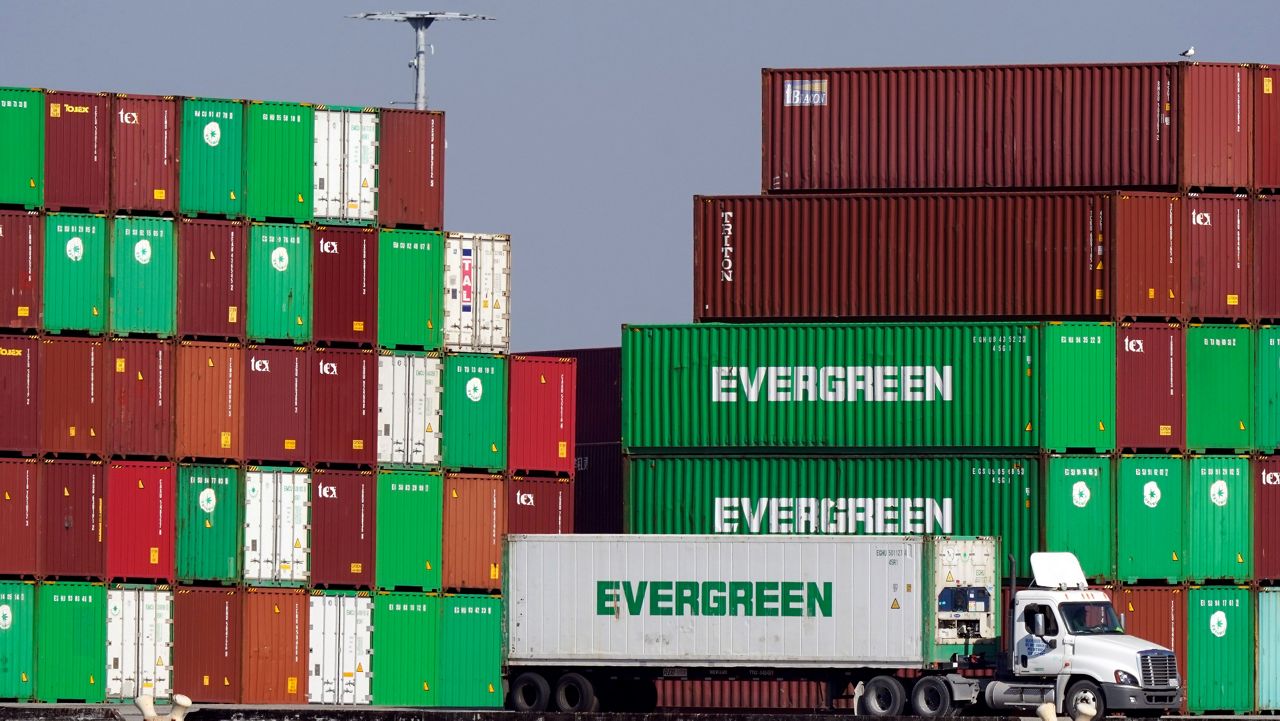LOS ANGELES (CNS) — The ports of Los Angeles and Long Beach will implement a new queuing process to improve safety and air quality off the Southern California coast.
The plan was developed by the Pacific Merchant Shipping Association, Pacific Maritime Association and Marine Exchange of Southern California, as well as individuals from member companies, according to the PMSA. The procedures are a response to the historic supply chain congestion at the twin ports, North America's largest maritime gateway.
"The new container vessel-queuing process creates a fair and transparent system to reduce vessels at anchor near the Ports of Los Angeles and Long Beach," said PMA CEO Jim McKenna. "Designed through strong collaboration between the PMA, PMSA and Marine Exchange of Southern California, this new procedure will improve maritime safety and air quality while helping ensure ports operate as efficiently as possible."
Effective Nov. 16, the new process will prevent large numbers of vessels from dropping anchor off the Southern California coast while waiting for a berth, which is expected to improve air quality and safety. The changes are designed to reduce ships at anchorage at the ports, where approximately 92 vessels were anchored or awaiting berth earlier this week. The process will not apply to ships currently in the arrival queue.
"The San Pedro Bay Ports play a critical role in California's statewide economic health," said PMSA President John McLaurin. "This system delivers a pragmatic solution through order and predictability that will reduce the number of ships idling off the coast in the coming months, improve safety and support the efficient movement of container-based goods."
Each vessel will be assigned a place in the arrival queue based on their departure time from their last port of call. Vessels will wait for an available berth approximately 150 miles offshore, allowing them to slow down and spread out, according to the PMSA. Under the current system, container vessels enter the arrival queue based on when they cross a line 20 nautical miles from the San Pedro Bay Port Complex.
Vessels will operate outside the new boundaries known as the Safety and Air Quality Area to limit the number of container vessels near the port complex. While awaiting a berth, eastbound ships must remain 150 miles west of Southern California, while northbound and southbound ships must remain more than 50 miles from California and Mexico. Vessels can come into the harbor for fuel, crew changes and regular ship business per normal processes.
"A safe, secure, efficient, reliable and environmentally sound marine transportation system is essential to our economy, which is why this new system is so vital," said Marine Exchange of Southern California Executive Director Capt. James Kipling Louttit. "Our organization is thrilled to have helped develop a process that relies on comprehensive, real-time data to support the health of our ports."
